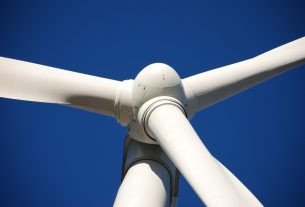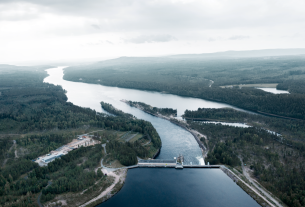United Kingdom – At RWE’s 1.4 GW Sofia offshore wind farm, offshore work has officially started to lay crucial undersea cable infrastructure from the UK’s north east coast to the wind farm site on Dogger Bank, in the center of the North Sea.
The first stretch of high voltage direct current (HVDC) export cable will be laid by cable installer Prysmian’s cutting-edge Leonardo da Vinci vessel, ready to transmit green electricity from the wind farm back to the UK coast and eventually into the UK transmission network. The two remaining 90km portions of the maritime export cable will be installed in 2024. By the end of 2024, Leonardo da Vinci will have completed the installation of four segments of 320kV HVDC marine export cables with XLPE insulation, totaling 440 kilometers in length along with the auxiliary communications cables.
The completion of the work is an important turning point for the project; RWE invested more over £3 billion in the energy infrastructure of the UK with Sofia. The wind farm will have the capacity to produce enough renewable electricity to power more than 1.2 million typical UK homes.
Sofia offshore wind farm
The Sofia offshore wind farm will have a single offshore converter platform and be situated on Dogger Bank, 195 kilometers from the closest location on the north east coast of the United Kingdom. The electricity produced will be sent to landfall in Redcar, Teesside, 220 kilometers away.
The wind farm, which is expected to be finished by the end of 2026, will utilize 100 Siemens Gamesa SG 14-222 DD 14 megawatt (MW) offshore wind turbines, the most cutting-edge technology currently in use. Of the 100 turbines in the project, 44 will have recyclable blades. The Triton Knoll Offshore Wind Farm and other future projects will be supported by RWE’s new offshore wind operations hub, the “Grimsby Hub,” which will also house the wind farm’s operations and maintenance activities.
Construction activities
The 170-meter-long Prysmian vessel will operate out of Middlesbrough’s port and lay two 130-kilometer cable sections concurrently. Between Redcar and Marske-by-the-Sea, close off the Teesside coast, is where the cable-laying operation will begin. Through cable ducts that were set up earlier this year, one end of each of the two subsea cable sections will be withdrawn underwater from the vessel. Before surfacing at the landfall construction compound, the cable will run beneath the beach, sand dunes, and road. The vessel will then turn away from the coast and lay the entire length of cable along a predetermined path in the direction of the offshore wind farm.
The project’s onshore converter station and cable corridor have been under development at Teeside from June 2021. A three-year offshore construction phase will begin with the laying of the first sections of export cable. The project’s offshore converter platform, scheduled to travel from Batam, Indonesia, to the UK in 2024, will arrive as part of the ongoing offshore construction activities. The beginning of the installation of the 100 expanded monopile foundations and array cables is also scheduled for the following year.




